Liposuction
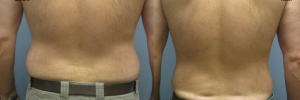
A fit and well-proportioned body is often considered a symbol of health and vitality. But despite good health and a reasonable level of fitness, some individuals may still have a body with disproportionate contours due to localized fat deposits. These areas may be due to heredity or family traits rather than a lack of weight control or fitness.
If you are bothered by excess fat deposits, located anywhere on your face or body, that do not respond to diet or exercise, liposuction may be right for you. In general, liposuction slims and reshapes specific areas of the body by removing localized or regional excess fat deposits, improving your body contours and proportion, and ultimately, enhancing your self-image.
What is Liposuction?
Problem areas that can be addressed with liposuction:
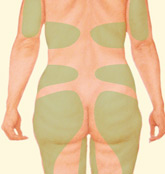
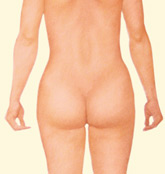
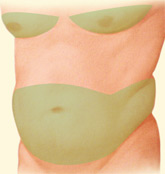
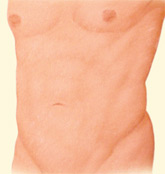
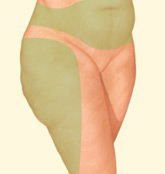
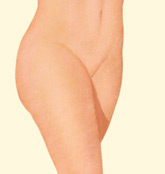
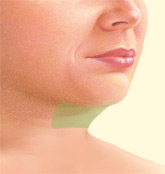
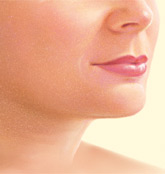
Liposuction, also called lipoplasty or suction lipectomy, is the surgical removal of localized or regional excess fatty tissue. There are three common variations to the procedure:
- Traditional liposuction, simply defined as surgical suctioning of excess fat deposits
- The tumescent or super-wet technique that requires an infusion of saline solution, with added adrenaline and possibility anesthetic prior to removal of excess fat
- Ultrasound-assisted lipoplasty or UAL, where ultrasonic energy is used to liquefy excess fat prior to surgical suctioning
The techniques may be used to reduce localized fat deposits of the:
- Cheeks, chin and neck
- Upper arms
- Breast or chest area
- Back
- Abdomen and waist
- Hips and buttocks
- Thighs
- Inner Knee
In some cases, liposuction is performed alone, in other cases it is used with plastic surgery procedures such as a facelift, male or female breast reduction, or a tummy tuck. Liposuction is not a treatment for obesity or a substitute for proper diet and exercise. It is also not an effective treatment for cellulite, the dimpled skin that typically appears on the thighs, hips and buttocks.
Liposuction can, however, permanently reshape body contours where excess fat deposits create areas that are disproportionately large in an otherwise balanced figure. Ideal candidates for liposuction are adults of any age within 30% of their ideal weight and with firm, elastic skin and good muscle tone. Good candidates are defined as:
- Healthy individuals who do not have a life-threatening illness or medical conditions that can impair healing
- Non-smokers
- Individuals with a positive outlook and specific goals in mind for body contouring
Special considerations may be necessary for individuals with diabetes, high blood pressure, heart disease or previous surgery to the treatment area.
Where Do I Begin?
A consultation with your plastic surgeon is the first step to learn how liposuction can improve body contours by removing excess localized fat deposits. A consultation is designed to fully educate you about liposuction in a non-pressured environment, and will include a discussion of:
- Your goals and an evaluation of your individual case
- The options available in surgical liposuction
- The likely outcomes of liposuction and any risks or potential complications
- The course of treatment recommended by your plastic surgeon
Evaluation
Overall health and personal outlook can greatly impact the outcome of body contouring with liposuction. These will be carefully evaluated in your consultation. The success of your procedure, safety, and overall satisfaction require that you:
- Honestly share your expectations
- Fully disclose health history, current medications, the use of vitamins, herbal supplements, alcohol, tobacco, and drugs
- Commit to following all of your plastic surgeon’s instructions precisely
Safety
By making the decision to consult with a plastic surgeon and following all the instructions given, you are taking an important step in helping to assure your safety. Dr. Legere is certified by the American Board of Plastic Surgery. This certification designates surgeons who are specifically trained in plastic surgery of the face and entire body.
My Liposuction
Liposuction is a highly individualized procedure that requires careful consideration of your specific concerns and the areas in which you desire improvement. An evaluation of skin tone and elasticity, as well as fat density and distribution will determine appropriate techniques for your specific case.
Liposuction is a surgical procedure. All liposuction techniques require incisions in or near the area to be suctioned for insertion of an appropriately sized cannula. In some cases, incisions may be so small that no stitches are required for closure. Once the cannula tip has loosened excess fat, the fat is removed using a surgical vacuum or powered suction device.
Where large amounts are suctioned from one area, compressions garments may assist during the healing process to help skin conform to the reduced body contours. Secondary procedures may sometimes be recommended to reduce excess skin. Special considerations are needed when large amounts, usually more than 5 liters, or 5000ccs, of fat are suctioned.
Dr. Legere uses ultrasonic assisted liposuction (UAL). Ultrasound assisted liposuction uses a special cannula that vibrates very rapidly and gives off ultrasound energy. As the cannula passes through the fat cells, that energy liquefies the fat cells, which are then suctioned out. The ultrasound can be administered either above the skin (with a special emitter) or below the surface of the skin (with an ultrasound cannula).
Preparing For Surgery
Dr. Legere will carefully explain the liposuction procedure you will undergo. You will be given specific instructions that may include:
- Pre-surgical considerations, diagnostic testing and medications
- Day of surgery instructions and medications
- Specific information related to the use of anesthesia
- Postoperative care and follow-up
You will also be asked to sign consent forms to assure Dr. Legere that you fully understand the procedure and any risks or potential complications.
Possible risks of liposuction include uneven contours, rippling or loose skin, skin or nerve damage, irregular pigmentation, infections at the surgical site, fat clots, blood clots, excessive fluid loss of fluid accumulation. In addition, there is risk of thermal burn or heat injury from ultrasound with the UAL technique. All surgery carries risks associated with anesthesia. These and other risks will be fully discussed prior to your procedure and consent.
It is natural to feel some anxiety, whether excitement for the anticipated outcomes or preoperative stress. Discuss these feeling with your plastic surgeon.
What To Expect
Liposuction will be performed at Premier Surgery Center, an ambulatory surgical facility, under local anesthesia with or without sedation, or general anesthesia. The decision for anesthesia will be based on the requirements of your specific procedure and considerations of patient and surgeon preference. Your plastic surgeon and the assisting staff will fully attend to your comfort and safety.
What happens during liposuction surgery?
Step 1 – Anesthesia
Medications are administered for your comfort during the surgical procedures. The choices include intravenous sedation and general anesthesia. Dr. Legere will recommend the best choice for you.
Step 2 – The incision
Liposuction is performed through small, inconspicuous incisions.
First, sterile liquid solution is infused to reduce bleeding and trauma. Then a thin hollow tube, or cannula, is inserted through these incisions to loosen excess fat using a controlled back and forth motion.
The dislodged fat is then suctioned out of the body using a surgical vacuum or syringe attached to the cannula.
Step 3 – See the results
Your improved body contour will be apparent when the swelling and fluid retention commonly experienced following liposuction subside.
With continued practices of healthy diet and fitness, the loss of excess fatty tissue should be permanently maintained. However, substantial weight gain can alter an otherwise permanent result.
Following Surgery
Once your procedure is completed, a compression garment or elastic bandages may cover treatment areas. These assist to control swelling and compress the skin to your new body contours. In addition, small temporary drains may be placed in existing incisions beneath the skin to remove any excess fluid. Before you are released following surgery, you and an accompanying family member, friend or caregiver will be given specific instructions that my include:
- How to care for the surgical site
- Medications to apply or take orally to aid healing and reduce the potential for infection
- Specific concerns to look for at the surgical site or in your general health
- When to follow up with your plastic surgeon
Progress And Healing
Initial healing will include swelling, numbness, soreness, bruising, and discomfort that can be controlled with medication. These are common conditions.
Dr. Legere will provide specific postoperative instructions based on the technique and extent of your procedure. These will include instructions on the use of any compression garments, expected return to activity and appropriate care of incisions. Follow all instructions carefully — this is essential to the success of your outcome. In general, a return to light, normal activity is possible as soon as you feel ready and is encouraged to prevent blood clots and other complications.
Initial wound healing may take from 5 to 10 days, at which time any sutures will be removed, if necessary. Healing will continue for several weeks as swelling continues to dissipate. Incision lines will improve over time. Continue to follow your plastic surgeon’s instructions and attend follow-up visits as scheduled. You will be encouraged to control your weight, as significant weight gain can reverse your results.
Results and Outlook
It may take several months for selling to fully dissipate. As it does, your new contours and enhanced self-image should continue to develop.
The fulfillment you feel from the initial results of liposuction should continue so long as you maintain your weight and practice a healthy lifestyle that includes eating well and regular physical activity. Following liposuction, your slimmer and better-proportioned body should more accurately reflect the healthy and active life you lead.







